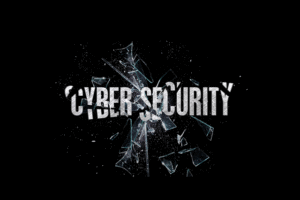Small businesses face significant cybersecurity risks, often due to limited resources and expertise. One of the most prevalent threats is phishing attacks, where criminals impersonate trusted entities through emails or messages to steal sensitive data. These attacks can lead to financial losses and data breaches. Another major concern is ransomware, which locks critical files until a ransom is paid, causing operational disruptions.
Many small businesses also struggle with weak passwords and poor authentication practices, making it easy for hackers to gain unauthorized access. Additionally, outdated software exposes systems to known vulnerabilities that cybercriminals exploit. Insider threats, whether intentional or accidental, further compound risks, as employees may mishandle data or fall for scams. Lastly, unsecured IoT devices and poorly configured cloud services create entry points for attacks. To mitigate these threats, small businesses should prioritize employee training, implement multi-factor authentication, maintain regular backups, and keep all systems updated. Investing in basic cybersecurity measures can prevent costly breaches and protect both business and customer data.
1. Ransomware: The Persistent Menace
Ransomware attacks continue to be a significant threat, with cybercriminals increasingly targeting small businesses due to their perceived weaker defenses. The rise of Ransomware-as-a-Service (RaaS) has democratized cyber extortion, allowing even novice hackers to launch sophisticated attacks. CyberTalents
Protective Measures:
-
Regularly back up critical data and store it offline.CyberTalents
-
Implement robust endpoint protection solutions.CyberTalents+1aspis.consulting+1
-
Educate employees on recognizing phishing attempts and suspicious links.
2. Phishing and Business Email Compromise (BEC)
Phishing attacks remain a leading cause of data breaches, with cybercriminals crafting sophisticated emails that deceive employees into revealing sensitive information. The rise of deepfake technology has further complicated this issue, enabling attackers to impersonate executives convincingly.
Protective Measures:
-
Deploy advanced email filtering solutions.
-
Implement multi-factor authentication (MFA) for accessing sensitive systems.
-
Conduct regular cybersecurity awareness training for employees.
3. Insider Threats: The Hidden Danger
Insider threats, whether malicious or accidental, pose significant risks to small businesses. Employees with access to sensitive information can inadvertently or intentionally cause harm, leading to data breaches or system compromises.
Protective Measures:
-
Limit access to sensitive data based on job roles.
-
Monitor user activity for unusual behavior.
-
Establish clear data security policies and conduct regular audits
4. Internet of Things (IoT) Vulnerabilities
The proliferation of IoT devices in small business environments introduces new vulnerabilities. Many IoT devices lack robust security features, making them attractive targets for cybercriminals.
Protective Measures:
-
Change default passwords and use strong, unique credentials.
-
Regularly update device firmware to patch security vulnerabilities.
-
Segment IoT devices from critical business networks
5. Cloud Security Misconfigurations
As small businesses increasingly adopt cloud services, misconfigurations have become a leading cause of data breaches. Simple setup errors, such as leaving storage buckets publicly accessible, can expose sensitive data to the internet.
Protective Measures:
-
Regularly audit cloud configurations for security vulnerabilities.aspis.consulting
-
Implement encryption for data at rest and in transit.
-
Enable multi-factor authentication for accessing cloud services.

6. AI-Powered Cyberattacks
Artificial intelligence (AI) is increasingly being leveraged by cybercriminals to enhance the sophistication of their attacks. AI-driven phishing scams, malware, and social engineering attacks are becoming more convincing and harder to detect. EVCO Services
Protective Measures:
-
Deploy AI-based security solutions to detect and mitigate threats in real-time.
-
Regularly update security protocols to address emerging AI-driven threats.EVCO Services
-
Educate employees on the risks associated with AI-powered attacks.aspis.consulting+7TrollEye Security+7reuters.com+7
7. Supply Chain Attacks
Cybercriminals are increasingly exploiting weak links in supply chains to infiltrate larger organizations. By compromising third-party vendors or partners, attackers can gain access to sensitive data and critical systems.
Protective Measures:
-
Conduct thorough security assessments of vendors and partners.
-
Establish strong third-party risk management protocols.
-
Monitor and audit third-party access to your systems regularly.
8. Zero-Day Exploits
Zero-day vulnerabilities, where attackers exploit software flaws before they are patched, are increasingly being used against small businesses. These attacks can lead to significant data breaches and system compromises,
Protective Measures:
-
Apply patches and updates promptly to address known vulnerabilities.
-
Implement intrusion detection and prevention systems to identify suspicious activity.
-
Consider managed detection and response (MDR) services for enhanced threat monitoring.
9. Cryptojacking
Cryptojacking involves hijacking a business’s computing resources to mine cryptocurrency without the owner’s knowledge. While it doesn’t involve direct data theft, cryptojacking can slow down systems, increase energy costs, and damage hardware.



